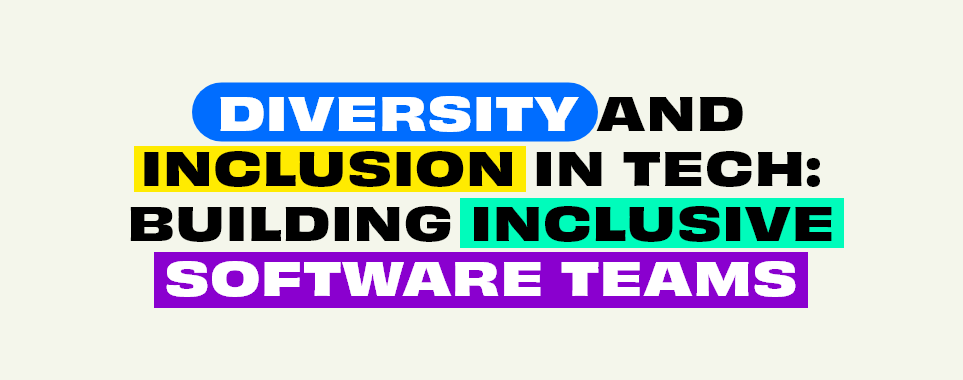
Technology has revolutionised the world, from how we communicate to how we work. But while tech teams have become increasingly diverse and inclusive, there is still much progress to be made in ensuring that everyone is included and represented in the development of software products.
In this article, we’ll discuss what diversity and inclusion look like in the tech world, why companies need to prioritise building inclusive software teams, and some concrete steps they can take to get started.
Diversity and inclusion in tech begin with recruiting a diverse team. Diversity is not just about race, gender, or ethnicity; it’s also about having a variety of perspectives and ideas on the tech team. Companies should strive to hire candidates from a variety of backgrounds and experiences so that they can bring their unique ideas to the table. This could mean actively seeking out underrepresented groups like women or people of colour for tech roles. Still, it can also mean considering candidates with different educational backgrounds or those who may have taken alternative paths to enter the industry.
It’s important to remember that diversity is beneficial from a business perspective and essential for creating an inclusive workplace culture. When everyone feels respected and valued, regardless of their identity or background, they’re more likely to contribute authentically and have meaningful discussions about developing software products. This ultimately leads to better products designed with all users in mind.
Once you’ve recruited your diverse team, you must ensure every member feels supported and included in the work environment. This means providing resources such as mentorship programs and access to learning opportunities for all team members, regardless of their background or experience level. It also means creating a safe space where people feel comfortable enough to speak up if any issues related to diversity and inclusion need addressing within the team.
Finally, companies should strive to design inclusive software products for all users. This involves conducting user research with different demographic groups to understand how different types of people interact with your product and identify potential areas for improvement. It also means testing your product across various platforms, browsers, operating systems, screen sizes, etc., so that everyone can access its full functionality no matter their device.
By prioritising diversity and inclusion in their software development process, companies can build teams that create innovative solutions for all users—not just some users—and move us closer towards equity in tech spaces. So, let’s commit today to building more inclusive software teams where everyone has equal access to new technologies!

